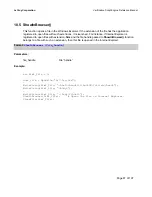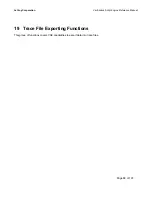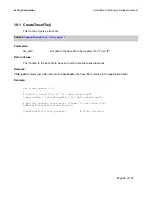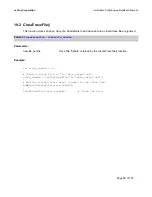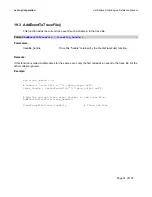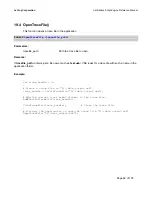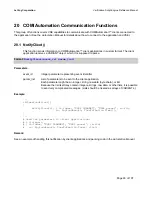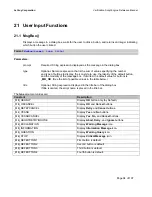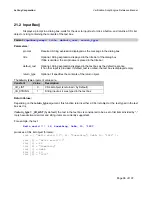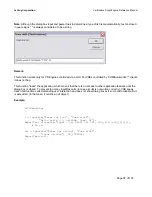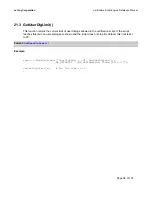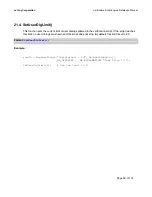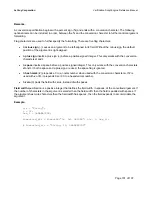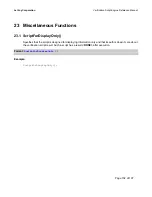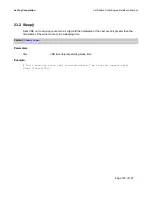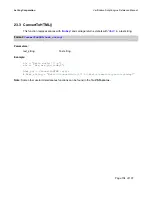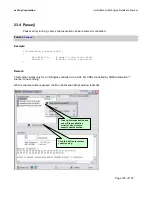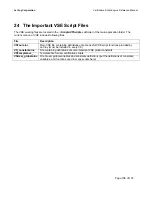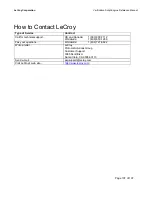
LeCroy Corporation
Verification Script Engine Reference Manual
Page 101 of 107
Remarks:
A conversion specification begins with a percent sign (
%
) and ends with a conversion character. The following
optional items can be included, in order, between the
%
and the conversion character to further control argument
formatting.
Flag characters are used to further specify the formatting. There are five flag characters:
•
A
minus sign
(-) causes an argument to be left-aligned in its field. Without the minus sign, the default
position of the argument is right-aligned.
•
A
plus sign
inserts a plus sign (+) before a positive signed integer. This only works with the conversion
characters
d
and
i
.
•
A
space
inserts a space before a positive signed integer. This only works with the conversion characters
d
and
i
. If both a space and a plus sign are used, the space flag is ignored.
•
A
hash mark
(#) prepends a 0 to an octal number when used with the conversion character
o
. If # is
used with
x
or
X
, it prepends 0x or 0X to a hexadecimal number.
•
A
zero
(0) pads the field with zeros, instead of with spaces.
Field width
specification is a positive integer that defines the field width, in spaces, of the converted argument. If
the number of characters in the argument is smaller than the field width, then the field is padded with spaces. If
the argument has more characters than the field width has spaces, then the field expands to accommodate the
argument.
Example:
str = "String";
i = 12;
hex_i = 0xAABBCCDD;
…
formatted_str = FormatEx("%s, %d, 0x%08X", str, i, hex_i);
# formatted_str = "String, 12, 0xAABBCCDD"

